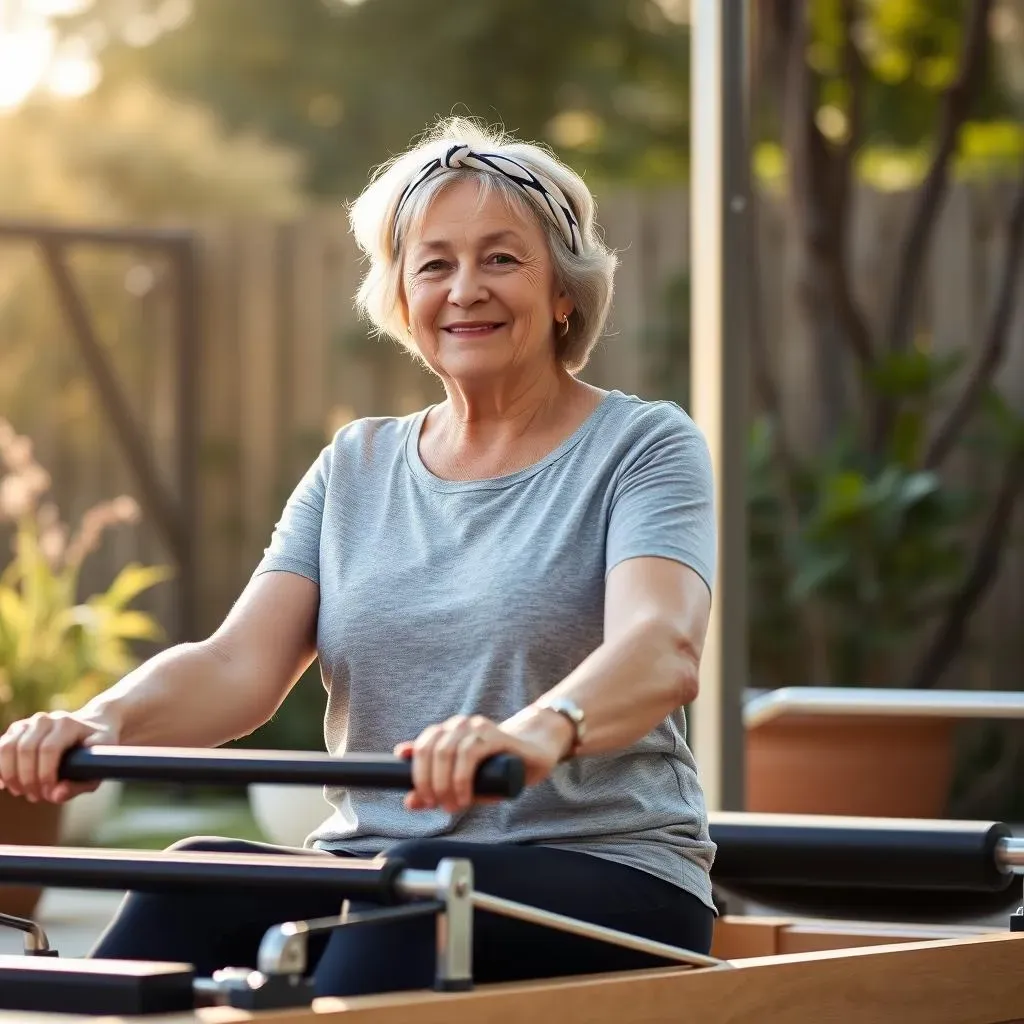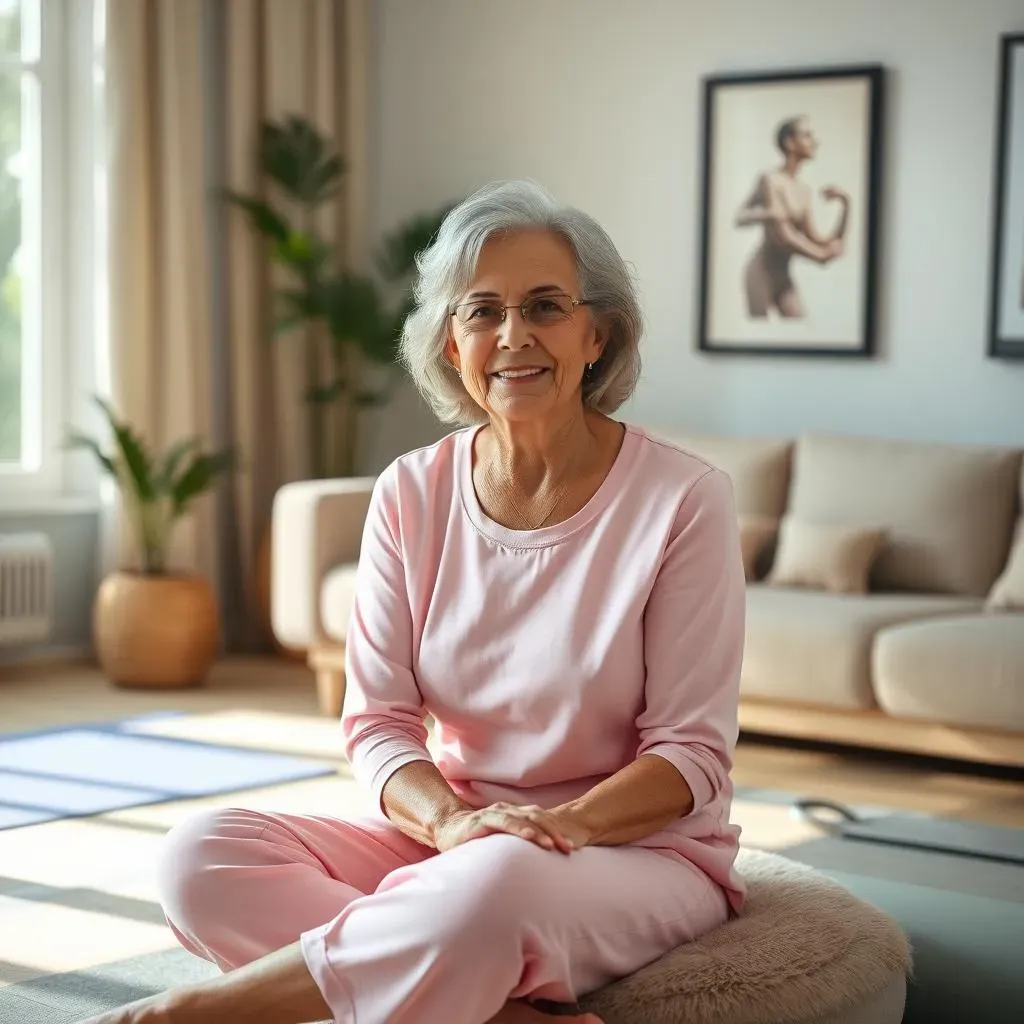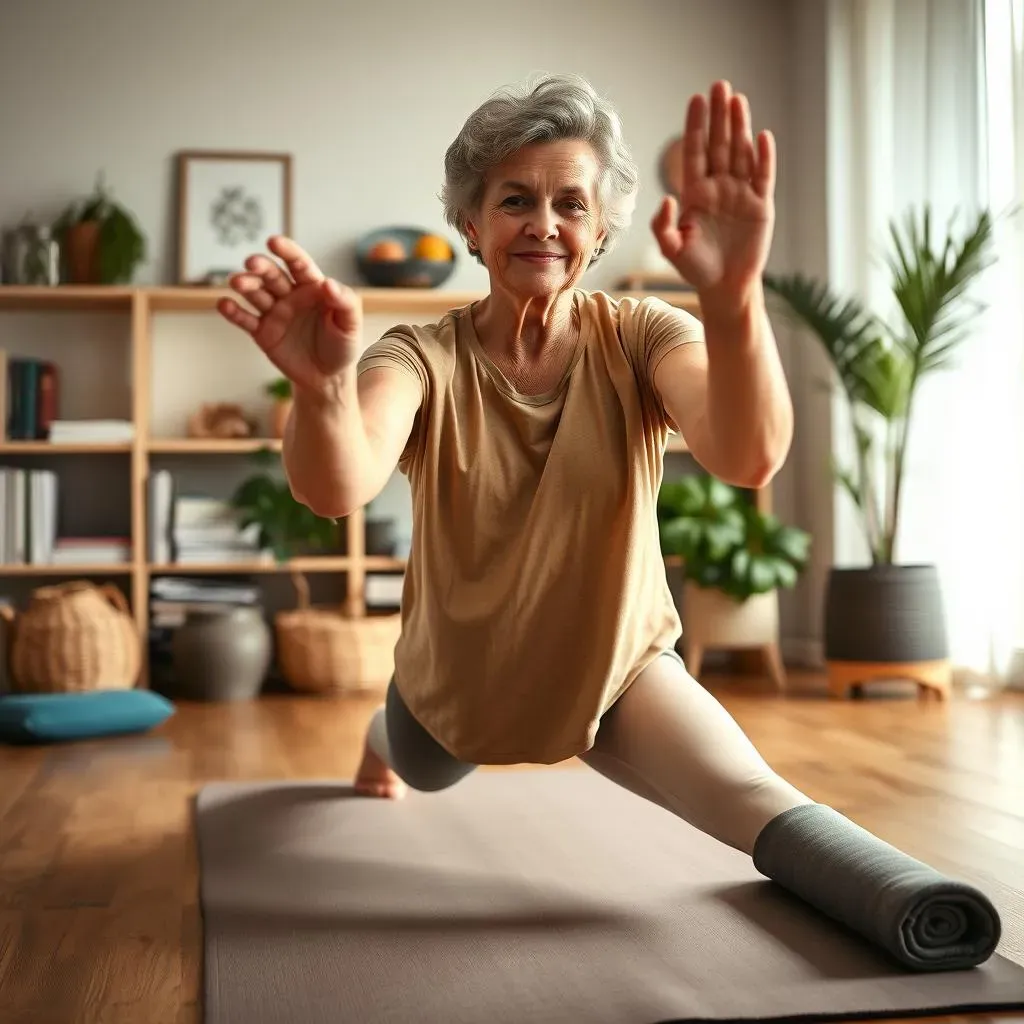Table of Contents
Are you a senior looking for a gentle yet effective way to improve your strength, flexibility, and balance? Then look no further! This comprehensive guide dives into the world of "pilates workout at home for seniors," offering a safe and accessible approach to fitness tailored specifically for older adults. We'll explore the unique benefits of Pilates for seniors, focusing on how this low-impact exercise can help alleviate common age-related concerns like joint pain and decreased mobility. Forget grueling workouts – we’ll guide you through a series of easy-to-follow exercises that you can comfortably perform in the comfort of your own home. Whether you're a complete beginner or have some Pilates experience, we've got something for you. We’ll also discuss how to modify exercises to fit your individual needs and abilities, ensuring a safe and enjoyable experience. Get ready to discover how Pilates can help you maintain your independence, improve your overall well-being, and enjoy a more active and fulfilling life. Let's get started on your journey to a stronger, more flexible you!
Understanding Pilates for Seniors: Benefits and Modifications

Understanding Pilates for Seniors: Benefits and Modifications
Pilates is amazing for seniors! It's all about controlled movements, focusing on core strength and flexibility. Think of it like building a strong foundation – a solid core helps with balance and prevents falls, which are a big concern as we age. Pilates isn't about intense cardio; it's about gentle, mindful movement that strengthens muscles without putting too much stress on joints. This makes it perfect for people with arthritis or other joint issues. You'll find improvements in posture too – no more slouching! For beginners, I recommend starting with a mat-based routine – it's super accessible. But if you're feeling adventurous, you can also check out our guide on pilates with resistance bands for an extra challenge. Remember, consistency is key. Even short, regular sessions are more beneficial than infrequent intense workouts.
Benefit | Explanation |
|---|---|
Improved Balance | Stronger core muscles enhance stability. |
Increased Flexibility | Gentle stretches improve range of motion. |
Reduced Joint Pain | Low-impact exercises protect joints. |
One of the best things about Pilates is how adaptable it is. You can easily modify exercises to suit your fitness level and any physical limitations. For example, if you have trouble standing for long periods, there are plenty of seated or lying-down exercises you can do. If you're looking for a more intense workout, you can always add resistance bands or other equipment. We have some great tips on Pilates for weight loss at home if you want to incorporate some weight loss into your routine. But remember, always listen to your body and stop if you feel any pain. It's about progress, not perfection!
- Consult your doctor before starting any new exercise program.
- Start slowly and gradually increase intensity.
- Focus on proper form to avoid injury.
- Listen to your body and rest when needed.
"Pilates is not about the number of repetitions; it is about the quality of each movement." - Joseph Pilates. This quote perfectly encapsulates the essence of Pilates for seniors. It's not about pushing yourself to the limit, but about performing each exercise with precision and control. For a gentle start, consider our guide on Pilates for beginners at home.
Easy Pilates Exercises for Seniors at Home: A StepbyStep Guide (with links to variations using equipment or focusing on specific goals like weight loss or flexibility; e.g., check out our guides on pilates with resistance bands or pilates for flexibility!)

Easy Pilates Exercises for Seniors at Home: A StepbyStep Guide (with links to variations using equipment or focusing on specific goals like weight loss or flexibility; e.g., check out our guides on pilates with resistance bands or pilates for flexibility!)
Let's get moving! We'll start with some basic, easy-to-follow Pilates exercises perfect for seniors. Remember, always listen to your body and stop if you feel any pain. We'll focus on proper form over speed or repetitions. Think quality over quantity! For beginners, a good starting point is our beginner's Pilates guide which provides a gentle introduction to the core principles.
- Pelvic Tilts: Lie on your back with knees bent. Gently tilt your pelvis, flattening your lower back against the floor. Hold, then release. This strengthens your core and improves posture. If you want to add a bit more intensity, try this exercise with resistance bands, as described in our Pilates with resistance bands guide.
- Shoulder Bridges: Lie on your back with knees bent and feet flat. Gently lift your hips off the floor, squeezing your glutes. Hold, then lower. This strengthens your glutes and hamstrings. If you're looking for ways to add this into a weight loss routine, see our Pilates for weight loss guide.
- Spine Stretch: Sit with legs extended. Reach forward, keeping your back straight as you lengthen your spine. Hold, then return to starting position. This improves spine flexibility and posture.
- Knee Folds: Lie on your back with knees bent. Gently draw one knee towards your chest, holding for a few seconds. Repeat with the other leg, alternating. This improves hip and abdominal flexibility. For more advanced variations, look at our best Pilates workouts guide.
These are just a few examples, and you can easily find many more online or in Pilates books. Remember to focus on your breathing throughout each exercise – it’s a key element of Pilates. Inhale deeply, and exhale slowly as you move. This helps control your movements and engage your core muscles more effectively. If you have any concerns about starting a new exercise program, it’s always best to consult with your doctor before you begin. For those who want to improve their flexibility, check out our guide on Pilates for flexibility.
Exercise | Muscles Worked | Benefits |
|---|---|---|
Pelvic Tilts | Abdominals, lower back | Improved core strength, posture |
Shoulder Bridges | Glutes, hamstrings | Increased strength, improved hip mobility |
Spine Stretch | Spine, hamstrings | Increased flexibility, improved posture |
Knee Folds | Abdominals, hip flexors | Improved core strength, hip flexibility |
Don't forget to listen to your body and modify the exercises as needed. If something feels too challenging, reduce the range of motion or take breaks as needed. The goal is to build strength and flexibility gradually, not to push yourself to the point of pain or injury. Remember, consistency is key! Even short, regular sessions are more effective than infrequent intense workouts. For toning, take a look at our Pilates for toning guide.
Creating a Sustainable Pilates Routine: Tips for Consistency and Safety

Creating a Sustainable Pilates Routine: Tips for Consistency and Safety
Building a Consistent Habit
So, you've started your Pilates journey – fantastic! Now, the real challenge begins: making it a sustainable part of your life. Consistency is key, but it's not about intense daily sessions; it's about finding a rhythm that fits your lifestyle. Start small. Even 10-15 minutes a day is better than nothing. Try to schedule your Pilates sessions at the same time each day to build a routine. This helps make it a habit. Think of it as brushing your teeth – you don’t skip that, right? Make Pilates just as important! Find a quiet space in your home, maybe put on some relaxing music, and create a calming environment that encourages you to focus on your body and your movements. If you're struggling to stick to a routine, try finding a workout buddy – either in person or virtually! Having someone to keep you accountable can make a big difference. Remember those beginner Pilates routines? They are a perfect starting point for building your consistency.
- Set realistic goals: start with shorter sessions and gradually increase duration and intensity.
- Find a workout buddy: accountability is key.
- Schedule your Pilates sessions: consistency is key.
- Create a relaxing environment: focus on your body and mind.
Prioritizing Safety and Listening to Your Body
Safety should always be your top priority. Before starting any new exercise program, it’s crucial to talk to your doctor, especially if you have any pre-existing health conditions. Listen to your body! Pain is a warning sign – don’t ignore it. If something hurts, stop immediately and rest. Pilates is about gentle, controlled movement, not pushing yourself to your limits. Focus on proper form over speed or repetitions. If you’re unsure about the correct form, consider investing in some online Pilates classes or working with a qualified instructor. They can guide you through the exercises and ensure you’re performing them safely and effectively. For additional support and guidance, consider our comprehensive guide on the best Pilates workouts at home. Remember, progress is more important than perfection.
Safety Tip | Explanation |
|---|---|
Consult your doctor | Especially if you have pre-existing conditions. |
Listen to your body | Stop if you feel pain. |
Focus on proper form | Quality over quantity. |
Consider professional guidance | Seek help from a qualified instructor. |
